Not much can be said about just how unhinged the Left has become. BUT DON’T FRET, the Democrats are ensuring we keep or gain in the House and Senate! Here are the rules of the game for celebrating Brett Kavanaugh’s crushing of said Leftists smears and propaganda: “How To Play The Devil’s Triangle Drinking Game“
Beer
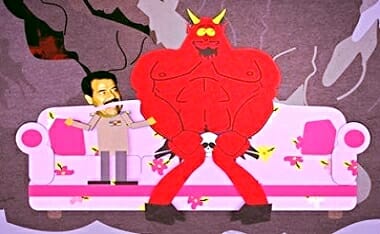
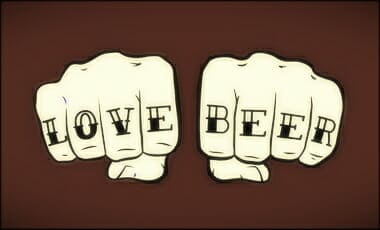
Best “Cease And Desist ” Order Ever – Budweiser
Hilarious! This is from THE DAILY CALLER:
Budweiser sent Modist Brewing in Minnesota what might be the coolest cease and desist letter in the history of America.
ESPN’s Darren Rovell tweeted out a video of a man dressed in medieval attire reading off a clever cease and desist letter about Modist Brewing’s new beer, which appears inspired by the famous Bud Light commercials.
“AWESOME: Minnesota craft brewer @ModistBrewing created a ‘Dilly Dilly’ beer, so Bud Light responded by sending a medieval town-crier to respond,” Rovell tweeted Sunday night.
AWESOME: Minnesota craft brewer @ModistBrewing created a “Dilly Dilly” beer, so Bud Light responded by sending a medieval town-crier to respond. pic.twitter.com/Dibtt21Mgf
— Darren Rovell (@darrenrovell) December 4, 2017

White House Press Secretary Uses Beer To Explains Tax-Cuts!
White House Press Secretary Sarah Huckabee Sanders Uses Beer To Explains Tax-Cuts!
Ahhhhh, I Get It

PRIORITIES
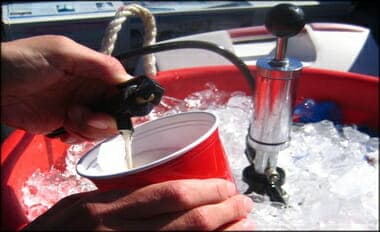
Party Tips for Kegs and Kegerators
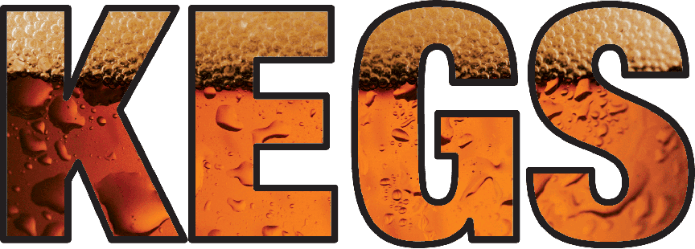
Looking for more tips on beer and wine pairing with cheese and food, as well as some hardware to support such a fine habit, see my TIPS Page.
I was at a friend’s house and he mention that his keg was putting out a bit too much foam. We both agreed that part of the reason was that it was a new keg. However, I am a big believer in lower PSI so with the micro-brewed (15-gallons), a PSI of 8-10 is good. However, if you have the proper set up you can go to the recommended 14, which does allow optimal taste in a pour. Yes, taste does change with pressure… most pubs you go to have about a 14 or higher setting.
There are ways for the amateur to start fixing the problem of foam, and here are some of the best tips for making your kegerator the best in the neighborhood. One of the most common causes of foam is the tower. As you or your guests go about drinking there brew the beer in the tower is warming up to room temperature. When someone goes to pour from the tap the beer in the tower is warm and that is typically the foamy part. That is one of the easiest ways to combat foam, but it takes a little cha-ching.
~ TIP
- One of the most helpful sites I have found (especially their forums section where dummies like myself can ask questions from the pros) is MicroMatic.com. I would suggest after going through this blog to stop over there and root around. They have everything under the sun for purchase.
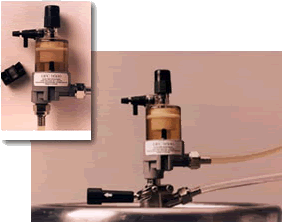
These cold taps cooled tower dispensers can be found at any of the sites I am going to recommend, they range in price and get pretty expensive. You know your finances better than I so shop with caution. Another item to add to your kegerator if you have the money to spend is this little device (Click image to the right for seller)
(SITE) This device is good for kegerators as well as the “back yard diddy.” Here is a demonstration of hooking it up as well as the best procedure for a backyard keg:
The device is not terribly expensive ($62), and for the person with the kegerator you would want to mount it inside the refrigerated section of the kegerator as to keep the beer in it cold.
~ TIP
- Another helpful site for ideas on what to buy and helpful hists is the site KegWorks.com. Check them out. Again, their people are really helpful, over the phone or email if you have any questions.
Again, some of these Q&A can get very technical, for homor sake I will post a response over at MicroMatic that made me laugh… keep in mind though that these folks take beer seriously!
Question:
Our boat club installed a new 4-faucet Mini-Mushroom tap from Micromatic recently. We have a little too much foam on all taps, and the only difference I can see is that the beer lines are a smaller diameter (1/4″ vs. 3/8″) than the old tap. Temp is good, it’s direct draw, same CO2 setup. Any ideas?
Response:
What’s the distance from the keg to the tap? What’s the “vertical lift” in the system (distance from center of keg to tap)? What beer are you dispensing?
Questioner:
The distance is about 36″, the beer is bud, bud light, Blue Point Toasted Lager and Blue Point Pale Ale. No trouble with old tap (it was an eyesore) same issue on all beers
Response:
Sorry to hit you with math here Nick but this is the way I work it out…
I was told that the proper formula to use is this…
L=(P-(H x 0.5) -1) / R
L=Length (Are you saying 36 inches from keg to tap?)
P= CO2 Pressure (for the type of beer you’re pouring I think it’s around 14lbs if your temp is 38F)
H=Height (from the center of Keg to the faucet let’s pretend its the three feet you’re talking about since that’s the only way I can see it – the taps being above the keg)
R=Resistance of the line
If the length is 3 feet like you say…
3=(14-(3 x 0.5) – 1) /R
3=9.5/R
3r=9.5 (This is the total resistance of the line)
We need to run line that has a total resistance of 9.5lbs. 3/16ID beer line has a resistance of 3lbs per foot… so if we run 3.17 feet of 3/16 you’ll have the perfect resistance.
If (and this might be the case), you’re really talking about 36 feet we’ll have to change the numbers a little and use different diameter line. Let me know.
And here is a great conversation about altitude and settings via Beer Advocate:
Question:
Hey Everyone, I have read countless thread on this and have not been able to solve my problem. I am getting all foam from my kegerator. I need to balance this for a coors light keg for now (no barbs about the crappy beer please, the home brew is going in afterwards) and I have been changing things based on recommendations from other peoples issues that I have read about, but can’t get this solved. Here are the facts:
-Mini-fridge style kegerator with tower and circulating fan to keep tower cool
-Tower goes 2 feet above keg
-Temperature of beer: 34 degrees
-line length: 12feet of 3/16″ beer grade line kept in the fridge, above the keg
-pressure: 10psi
-Altitude: ~7500 feet (in Colorado)
-Everything has been cleaned thoroughly
-Brand new CO2 regulator
-Keg was placed in the kegerator for three days to settle, then tapped and vented and sat for another 48 hours
I have tried line lengths from 3ft to 12ft, Pressures from 3psi to 16 psi, and temperatures from 33degrees to 40 degrees. Every time I change something I let the whole system settle. All I ever get is foam, foam, foam. If anyone has any ideas I am more than happy to try pretty much anything at this point as I am thoroughly frustrated.
Thanks in advance.
Answers:
if you have screwed around with your pressure very frequently you have probably altered the vols of the beer in keg, so it is difficult to determine if the keg beer is over carbed, under carbed or something else. not much can be done about that now though.
be sure the beer in the glass is the correct temp. the first pour should be your desired temp. measure with an accurate thermometer on the first pour.
let’s assume that everything works.
you are at 7,500 feet. about 1 pound of restriction must be added for every 2,000 feet above sea level. so a bit less than 4 psi, roughly, in additional restriction to overcome. you don’t have an altimeter i assume, and we just need to be close enough.
you need something closer to 18-20 psi with this beer at 38 degrees. try 5′ of 3/16″ vinyl and shorthen to 4′ if needed.
i am going off memory here, and a pro can likely dial it in a bit better but i think we are pretty close. your applied pressure is too low.
let us know how it works. you might need a second keg.
Cheers.
Here is what you need to do always to pour great beer:
1. Set and check your beer temp and serve between 38 and 40.
2. Keep your line short (6 ft or less) and use the smallest diameter beer line (3/16).
3. Set psi at 10 for all beers except hoppy ones (e.g., not Coors/Budweiser type beers) and set them at 11 and leave it. 11 psi works best for a permanent setting.
4. Use all stainless steel facets and connectors which touch beer and clean these lines weekly (minimum every 2 weeks). Be sure to disassemble facets and tappers and clean.
5. When serving beer – Open and close the facet briskly and fully! If you try to open it slowly it creates turbulence and foam.
If this does not work, come down to our brewery for remedial training!
You can read more in their Forums at Beer Advocate on various subjects. Obviously this is more business oriented, but one can see why not paying attention to your math teacher actually hurts you later in life. Of course the easiest way one is going to keep foam issues down is to CLEAN YOUR LINES! (Here is a longer video help)
It may be troublesome, but this is the price one pays for perfection. Here is a short Q&A from BeverageFactory.com that explains the issues:
Q: Why do dispensing lines have to be cleaned?
Beer lines have to be cleaned because a scale called calcium oxalate, commonly referred to as “beer-store” forms on the fittings, lines and taps. “Beerstore”, if not completely removed in a cleaning process will leave an unsanitary surface that can harbor microorganisms. Line cleaning with the proper equipment and chemical, eliminates the build-up of “beerstore” protecting the integrity of the product.
Microorganisms or bacterial will grow very quickly if a sanitary environment is not maintained, causing off-flavors or shorten the shelf life of the beer. Regular cleaning assures that bacteria does not have the opportunity to reach levels which affect the quality/taste of the beer.
Q: How often should I clean my lines?
Line cleaning should be done on a regular scheduled basis. (approximately every 6 weeks) A standard cleaning kit will perform approximately with scheduled line cleanings. We recommend that you clean your lines every time you switch out a keg.
Q: How do I clean the Beer Line and Faucet?
Once a week the beer line and faucet should be cleaned with fresh water. You will need the CK100 Cleaning Kit to do the following steps.
Clean, clean, clean! This is the best possible recipe for a healthy poor.
Jockey Box Tips!
Cobra Attachment Tips!
One last item, one of the reoccurring problems during my time at a place that sold kegs was the proper hookups for the proper beer (e.g., domestic, European, and the like).
Proper Beer Couplers!
So some of the guys and I put together a helpful list of proper couplers to pair with the right beer. Whether you are having a “dirt-party” or have a nice kegerator tucked away in a corner of your home, this list is most helpful:
I hope this helps all you beer lovers out there — Cheers, Papa Giorgio.

Republicans ❤ Alcohol, More Than Democrats, And Even The WORLD!
This important bit of info comes way of Libertarian Republican:
U.S. Republicans beat Africans, Asians, Latin Americans, Euros and even U.S. Democrats. Muslim Middle Easterners the most intolerant of alcohol by far
From Eric Dondero:
Pew surveyed views on hot button social issues, like abortion, divorce, homosexuality, gambling and alcohol. Overall, Americans, both Democrats and Republicans were far more open and tolerant than virtually all other cultures around the world.
A couple of exceptions: Republicans were less respecting of divorce than Europeans, and more pro-life on abortion, and opposed to gay marriage. And the GOP is not as tolerant as it could be on legalized gambling.
[….]
….the gap between Dems and Repubs was significant, a full 5%…
[….]
Bottom line from the libertarian perspective: The Republican Party is consistently the home of anti-prohibitionism and anti-Islamism. Which makes all the sense in the world considering Dems today favor hugely expansive taxes on alcohol, nanny-state regs on bars, opposes lowering the drinking age to 18, and are the party that caters to Muslims.
Christian owned alcohol shops in southern Lebanon receive threats from Muslim groups
Protests have been made and threats issued over recent months against Christian-run shops that sell alcoholic beverages in the South of Lebanon, a ‘feudal’ territory ‘belonging’ to the Shiite Islamic Hezbollah movement and its militias….
Algeria on the verge of closing down all Bars, banning all Alcohol
The two, Hachemi Sahnouni, who helped found the Islamic Salvation Front, and Abderazak Zeraoui Hamadache, said that alcohol is “perverting our youth and destroying our religious morals.”
The call to close all bars recalls the period referred to as the “black decade” in the 1990s when extremists imposed their will on many villages and cities.
Liberal-run city of Portland, OR moves ahead with ban on Beer sales downtown
….If the OLCC gives the city the green light, stores would not be able to sell single containers of malt liquor or domestic beer over 22 ounces, or malt liquor or domestic beer with more than 5.75 percent alcohol. They also wouldn’t be able to sell wine with more than 14 percent.
And this:
Originally, the target area included Old Town, Goose Hollow and the downtown core but now the OLCC is now looking at adding the Pearl District and Northwest 23rd Avenue to the roster
Note – The Portland city council is entirely Democrat. Additionally, the Mayor Sam Adams (yes, that’s his real name) is also a Democrat.
Also, from an old post: “Lift a Pint for Global Warming!” And why many think “Global Warming” is good:
During the Middle ages, from about 800 to 1300, the world went through five centuries of higher temperatures than average…yes, even higher than today. 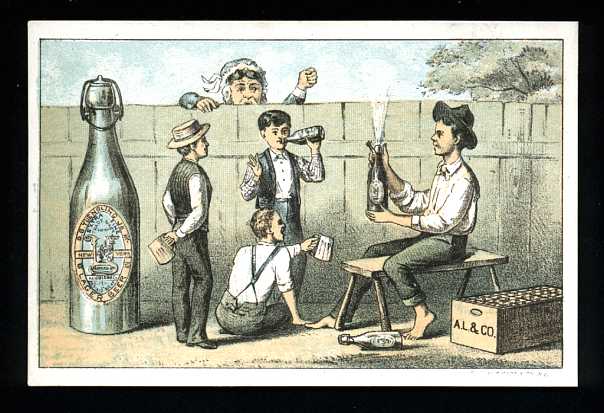
During this era, the Vikings traveled around the known world–over land to the East, and by sea to the West. Warmer weather in the North meant less difference in temperature between the North and the Equator, hence fewer and less severe storms on the oceans. The higher temperatures also made it possible to grow grain and other food products in more Northern regions, including Greenland. There was a reason why they called it ‘green’ land: it actually was very green during that period. Since Vikings were ale drinkers, they had ale on their ships, rather high alcohol ale. Because of the warmer global climate, they were able to brew it with local grains from many of the territories to which they traveled. They spread their brewing techniques far and wide, even to Newfoundland (Canada), which the Vikings called Vin-land, since they found grapes over there.
Speaking of grapes, the warmer weather permitted grapes to grow in vineyards as far North as Northern England, the Low-Lands (today’s Belgium and the Netherlands) and vast territories in the East. The consumption of wine and beer mingled amongst the classes. Wine had always been reserved for the wealthy, but its new found abundance allowed it to spread down the hierarchical ladder of society. The line between wine and beer drinkers had also been geographically defined, since locals drank alcoholic beverages made from what was locally available, grapes or grains. That changed: brewers and vintners lived on the same lands now.
Thanks to the abundance of food produced during the constant good weather in that era, the population doubled or even tripled in some places, where it had been constant during the colder era (300-800 a.d.). The abbeys, who were so important in spreading the brewing technique and the cultivation of yeast-strings, became very rich and powerful. Less flooding (less strong storms) allowed them, for example, to create “new land” in vast quantities on the sea in today’s Flanders (Belgium) by building dikes. The cities emerged because each harvest produced more food, and more children stayed alive to become adults thanks to better weather and better food. International trade flourished over land (roads were not washed away as often as in the past) and over sea (less intense storms, more predictable weather). Thanks to the global warming in that era the brewing and consumption of good beer multiplied. More people, more successful people (cities, abbeys), more thirsty people, better grains cultivated in more territories were all factors that contributed in the creation of many new and diverse styles of beer. Wine making and beer brewing techniques influenced each other, especially in today’s Belgium, where rich cities, free from Royal rule, took advantage of the abundance and the freedom to trade.
The overall wealth was so great, optimism so high, food growing so easily, that nobility of the era in Western Europe could look beyond their borders. They were able to take a large number of their men, much of their treasure, and travel to the Middle East in an attempt to liberate the region from the Muslims, who had invaded and enslaved all the Christian lands. Indeed, this was the beginning of the Crusades, and there were many of these organized mass summer trips.
Alaskan Smoked Porter Ice Cream with Brownie Chunks!!
Beer Commercial Nixed `God`
Moonbat says:
Ironically, Samuel Adams was possibly the most markedly devout Christian among the Founding Fathers.
3 Alcohol Stories
Christian owned alcohol shops in southern Lebanon receive threats from Muslim groups
Protests have been made and threats issued over recent months against Christian-run shops that sell alcoholic beverages in the South of Lebanon, a ‘feudal’ territory ‘belonging’ to the Shiite Islamic Hezbollah movement and its militias….
Algeria on the verge of closing down all Bars, banning all Alcohol
The two, Hachemi Sahnouni, who helped found the Islamic Salvation Front, and Abderazak Zeraoui Hamadache, said that alcohol is “perverting our youth and destroying our religious morals.”
The call to close all bars recalls the period referred to as the “black decade” in the 1990s when extremists imposed their will on many villages and cities.
Liberal-run city of Portland, OR moves ahead with ban on Beer sales downtown
….If the OLCC gives the city the green light, stores would not be able to sell single containers of malt liquor or domestic beer over 22 ounces, or malt liquor or domestic beer with more than 5.75 percent alcohol. They also wouldn’t be able to sell wine with more than 14 percent.
And this:
Originally, the target area included Old Town, Goose Hollow and the downtown core but now the OLCC is now looking at adding the Pearl District and Northwest 23rd Avenue to the roster
Note – The Portland city council is entirely Democrat. Additionally, the Mayor Sam Adams (yes, that’s his real name) is also a Democrat.
The Reason Mankind Evolved
Beer From the Bottom-AWESOME!
More Beer (so you aren’t paying for foam), auto stop so the person pouring is quicker. Great invention!
Merry Christmas from the Bowen Beer Bottle Band

